
China Green Development Index Report 2011
¥ 20 九品
仅1件
作者Pan、Jiancheng 著;Li;Xiaoxi
出版社HarperCollins UK
出版时间2011-01
版次1
装帧精装
货号12-4B
上书时间2018-05-11
- 最新上架
商品详情
- 品相描述:九品
图书标准信息
- 作者 Pan、Jiancheng 著;Li;Xiaoxi
- 出版社 HarperCollins UK
- 出版时间 2011-01
- 版次 1
- ISBN 9783642315961
- 定价 230.00元
- 装帧 精装
- 开本 16开
- 纸张 胶版纸
- 页数 529页
- 【内容简介】
-
The report was launched beginning the China’s TwelfthFive-year Period (2011-2015). After revising the measurement systemof the Green Development Index 2010, the report measures the greendevelopment level of 30 provinces, municipalities and autonomousregions as well as 34 large and medium-sized cities in China. Thecity-based measurement is first introduced into the report.
Both the province and the city Green Development Index systemsconsist of three parts, the green degree of economic growth, thecarrying potential of natural resources and environment, and thesupport degree of government policies. The three parts reflect theproduction and resource usage efficiency, the situation ofenvironment and resources protection and pollutants emission, andgovernment’s related investment and management respectively.
The report also summarizes the achievements in China’s greendevelopment during the Eleventh Five-year Period (2006-2010) andputs forward 11 special researches.
The China Green Development Index Report 2011 has the highlycomprehensive evaluation of the green economy development in Chinaand its importance to China’s rational development and switch ineconomic development model. - 【作者简介】
-
Li Xiaoxi, a famous Chinese economist and expert entitled tospecial allowance by the State Council, is professor of economics,PhD tutor, vice director of the Academic Committee of BeijingNormal University and an expert of the Chinese Economists 50 Forum.He was formal director of the Research Office of the State Council.In 2003, he was awarded the Sun Yefang Economic Prize.Report seriessuch as A Report on the Development of China's Market Economy 2003and A Report on the Development of China's Market Economy 2005submitted to EU and the United States discussing China’s marketeconomy status was applauded by the international community. Theformer won the Sun Yefang Economic Prize and the latter publishedby Ashgate Publishing Ltd. Pan Jiancheng ,PhD, DeputyDirector-General of China Economic Monitoring and Analysis Center,National Bureau of Statistics of China.
- 【目录】
-
Contents
1 Introduction
1.1 Influences of China Green Development Index Report
1.1.1 In-Depth Media Coverage Home and Abroad
1.1.2 Consensus on the Inter-Provincial Ranking of
the Green Development Index
1.1.3 Tremendous Multi-Disciplinary
Review Comments
1.1.4 Green Development Index Attracting Global
Attention for its Ideas and Methodology
1.2 The Latest Trends in Green Development
1.2.1 China’s New Thoughts on Green Development
1.2.2 Unfolding Green Development Forums
and Activities
1.2.3 International Exchanges on Green Development
1.2.4 The 12th Five-Year Plan, China’s First
Green Development Plan
1.3 Improvements of China Green Development Index
1.3.1 Improvements of China Province Green Development
Index System
1.3.2 The Establishment of China City Green Development
Index System
1.4 Results and Analysis of China Green DevelopmentIndex
1.4.1 Results of China Province Green
Development Index
1.4.2 Comparison of Provincial
Green Development Index
1.4.3 City Green Development Index
1.4.4 Comparison of City Green
Development Index
xxi
1.4.5 Findings of the Comparison of Green
Development Indexes
1.5 Framework and Core of the Report
Session I Green Growth of the Economy
2 Green Growth: Constructing a Resource-Saving
and Environment-Friendly Production Pattern
2.1 Green Growth: The Key to Building a Resource-Saving
and Environment-Friendly Society
2.1.1 Resource and Environmental Limitations in China
2.1.2 Core Reasons of Resource and Environmental
Problems
2.1.3 Essential Requirements to Harmonize
‘‘Green Environment’’ and ‘‘Economic Growth’’
2.2 Constructing a Resource-Saving Production Pattern
2.2.1 Intensifying the Control of Total Resource
Consumption to Avoid Disordered Exploitation
2.2.2 Taking Advantage of Pricing Mechanism
for Optimal Resource Allocation by Streamlining
the Pricing System of Resource Products
2.2.3 Striving to Develop the Circular Economy
by Production Pattern Innovation to Improve
the Comprehensive Resource Utilization Efficiency
2.3 Constructing an Environment-Friendly ProductionPattern
2.3.1 Economic Approach: Environmental Tax and Trading
System of Environmental Property Rights
2.3.2 Administrative Approach: Green Political System
2.3.3 Technological Approach: Green Technology
3 Green Growth of the Primary Industry
3.1 Major Features and Problems of Green Growth of thePrimary
Industry in the 11th Five-Year Plan Period
3.1.1 Major Features of Green Growth
of the Primary Industry
3.1.2 Problems in Green Growth of China’s
Primary Industry
3.2 Regional Comparison on Green Growth of the Primary
Industry in the 11th Five-Year Plan Period
3.2.1 Labor Productivity of the Primary Sector
3.2.2 Land Production Efficiency
3.2.3 Agricultural Water Resource Utilization
3.2.4 Intensities of Fertilizer and Pesticide Utilization
3.2.5 Summary
xxii Contents
3.3 Prospects of Green Growth of the Primary Industry
in the 12th Five-Year Plan Period
3.3.1 Opportunities for Green Growth
3.3.2 Green Growth Facing Challenges
3.3.3 Suggestions of Green Growth of the Primary Industry
in the 12th Five-Year Plan Period
4 Green Growth of the Secondary Industry
4.1 Features and Existing Problems of the Green Growth
of the Secondary Industry in China During
the 11th Five-Year Plan Period
4.1.1 Features of the Green Growth of the
Secondary Industry
4.1.2 Existing Problems of the Green Growth
of the Secondary Industry
4.2 Regional Comparison on the Green Growth of China’s
Secondary Industry During the 11th Five-Year PlanPeriod
4.2.1 Comparative Analysis on the Green Growth
of the Secondary Industry on Provincial Level
4.2.2 Comparative Analysis on the Green Growth of the
Secondary Industry on the Level of Major Cities
4.3 Outlook on the Green Growth of China’s Secondary
Industry During the 12th Five-Year Plan Period
4.3.1 Opportunities for the Green Growth of the Secondary
Industry During the 12th Five-Year Plan Period
4.3.2 Challenges Facing the Green Growth of the Secondary
Industry During the 12th Five-Year Plan Period
5 Green Growth of the Tertiary Industry
5.1 Characteristics and Issues of the Green Growth ofChinese
Tertiary Industry During the 11th Five-Year Plan Period
5.1.1 Characteristics of the Green Growth of Tertiary
Industry During the 11th Five-Year Plan Period
5.1.2 Problems of the Green Growth of Tertiary Industry
During the 11th Five-Year Plan Period
5.2 Regional Comparison of the Green Growth of Chinese
Tertiary Industry During the 11th Five-Year Plan Period
5.2.1 Regional Comparison of the Green Growth
of Chinese Tertiary Industry During
the 11th Five-Year Plan period
5.2.2 Inter-City Comparison of the Green Growth
of Tertiary Industry in China During the
11th Five-Year Plan period
Contents xxiii
5.3 Green Growth Outlook of Chinese Tertiary Industry During
the 12th Five-Year Plan Period
5.3.1 Opportunities of Green Growth of Chinese
Tertiary Industry
5.3.2 Challenges Facing Green Growth of Tertiary Industry
During the 12th Five-Year Plan Period
6 Measurement and Analysis of Green Degree
of Economic Growth
6.1 Calculated Results of Green Degree of Economic Growth
6.1.1 Calculated Results of Inter-Provincial GDEG
6.1.2 The Results of City GDEG
6.2 Analysis of Inter-Provincial Comparison of Green Degree
of Economic Growth
6.2.1 Analysis on the Measurement of Provincial
Green Growth Efficiency Indicators
6.2.2 Analysis on the Measurement of Primary Industry
Indicators on the Provincial Level
6.2.3 Analysis on the Measurement of Secondary
Industry Indicators on the Provincial Level
6.2.4 Analysis on the Measurement of Tertiary Industry
Indicators on the Provincial Level
6.3 Comparative Analysis of Green Degree of Economic Growth
on the City Level
6.3.1 Analysis on the Measurement of Green Growth
Efficiency Indicators on the City Level
6.3.2 Analysis on the Measurement of Primary Industry
Indicators on the City Level
6.3.3 Analysis on the Measurement of Secondary
Industry Indicators on the City Level
6.3.4 Analysis on the Measurement of Tertiary Industry
Indicators on the City Level
6.4 Conclusion
Session II Resource and Environment Carrying Capacity
7 Resource Bottlenecks and Environment Constraints
in Green Development
7.1 Resource Bottlenecks in China’s Green Economic
Development
7.1.1 Relative Scarcity Analysis of China’s
Natural Resources
xxiv Contents
7.1.2 Permeability Analysis of China’s
Natural Resources
7.1.3 The Combination of Relative Scarcity
and Permeability Analysis
7.1.4 The Impact of Economic Development
on the Bottleneck Effect of Resources
7.2 The Environmental Constraints on China’s
Economic Development
7.2.1 China’s Environmental Problems
7.2.2 The Environmental Constraints on
Economic Development
References
8 Green Development and Resource Support
8.1 Resource Support to China’s Green Economic Development
in the 11th Five-Year Plan Period
8.1.1 Utilization of Energy Resources
8.1.2 Utilization of Water Resources
8.1.3 Changes of Forest and Land Resources
8.2 Regional Comparisons of Resources Support in China’s
Green Economic Development During 11th Five-Year
Plan Period
8.2.1 West–East Gas Pipeline Project
8.2.2 West–East Coal Transportation Project
8.2.3 West–East Electricity Transmission Project
8.2.4 South-to-North Water Diversion Project
8.2.5 Afforestation Project
8.3 Outlook of Resource Support to China’s Green
Economic Development in the 12th Five-Year Plan Period
8.3.1 Energy Resources
8.3.2 Water Resources
8.3.3 Arable Land Resources
9 Green Development and Environmental CarryingCapacity
9.1 Environmental Carrying in China’s Green Economic
Development in the 11th Five-Year Plan Period
9.1.1 Environmental Quality
9.1.2 Pollutants Emission Reduction Progress
9.1.3 Relationship Between Pollution and
Economic Development
Contents xxv
9.2 Regional Comparison of Environmental Carrying in China’s
Green Economic Development in the 11th Five-Year
Plan Period
9.2.1 Comparison of Regional Emission
Reduction Progress
9.2.2 Regional Comparison of PETE Index
9.3 The Prospect of the Environmental Carrying in China’s
Green Economic Development in the 12th Five-Year
Plan Period
9.3.1 Multi-pollutants Emission Reduction Targets
9.3.2 Innovative Emission Reduction Mechanism:
Co-Control
10 Green Development and Ecological Construction
10.1 China’s Achievements in Ecological Construction During
the 11th Five-Year Plan Period
10.1.1 Effective Protection of Water Resources
10.1.2 The Constant Increase in Afforestation
10.1.3 Nature Reserves and Wetland Construction
Continued Promoting
10.2 Regional Comparison of Ecological Construction in
Green Economic Development in China’s
11th Five-Year Plan Period
10.2.1 Region Comparison of Ecosystem Status
10.2.2 Key Ecological Projects and Major Regions
10.3 Prospects for China’s Ecological Construction in Green
Economic Development During the
12th Five-Year Plan Period
10.3.1 Building the Strategic Pattern for National
Ecological Security
10.3.2 Strengthening Ecological Protection
and Management
10.3.3 Establishing and Optimizing
Eco-Compensation Mechanism
11 Measurement and Analysis of Carrying Potential
of Natural Resources and Environment
11.1 Calculated Results of ICPNRE
11.1.1 Calculated Results of Provincial ICPNRE
11.1.2 Calculated Results of City ICPNRE
xxvi Contents
11.2 Comparative Analysis of ICPNRE on the ProvincialLevel
11.2.1 Measurement Results and Analysis of Resource
Abundance Status and Ecological Conservation
Indicator on the Provincial Level
11.2.2 Measurement Results and Analysis of Environmental
Stress and Climate Change Indicator
on the Provincial Level
11.3 Comparative Analysis of ICPNRE on the City Level
11.3.1 Measurement Results and Analysis of Resource
Abundance Status and Ecological Conservation
Indicator on the City Level
11.3.2 Measurement Results and Analysis of Environmental
Stress and Climate Change Indicator
on the City Level
11.4 Conclusion
Session III Government Green Actions
12 Government Actions in China’s Green Development
12.1 Green Economic Development and GovernmentFunction
12.1.1 The Economic Theory of Government Policies
on Propelling Green Development
12.1.2 Summary of Green Development Policies
in Developed Countries
12.2 Government Actions in Green Development During the
11th Five-Year Plan Period: Policies,
Achievements and Problems
12.2.1 Major Actions in Promoting Green Development
During the 11th Five-Year Plan Period
12.2.2 The Major Achievements in Government Green
Actions During the 11th Five-Year Plan Period
12.2.3 The Main Problems of China’s Green
Development and Its Reasons
12.3 Government Green Actions During the 12th Five-Year
Plan Period: Planning and Prospect
12.3.1 The New Requirements for Government Green
Actions During the 12th Five-Year Plan Period
12.3.2 Government Strategic Measures in Green Development
During the 12th Five-Year Plan Period
References
Contents xxvii
13 Government Green Investment
13.1 Overview of Chinese Government Green Investment
in the 11th Five-Year Plan Period
13.1.1 Main Achievements of China’s Government Green
Investment During the 11th Five-Year Plan Period
13.1.2 Main Problems with China Governments’
Green Investment
13.2 Regional Comparison of China Governments’ Green
Investment During the 11th Five-Year Plan Period
13.2.1 Provincial Comparison of China Governments’
Green Investment
13.2.2 Government Green Investment in Major Cities
13.3 Prospects of Government Green Investment in ChinaDuring
the 12th Five-Year Plan Period
13.3.1 Continue to Perfect the Government Green
Investment System in China
13.3.2 More Government Support on Green Investment
with Fiscal and Financial Resources
13.3.3 More Efforts in the Promotion of Government
Green Investment in Key Areas
References
14 Urban Infrastructure Construction and Management
in Green Development
14.1 Urban Infrastructure Construction Under the Background
of Green Development in the 11th Five-Year Plan Period
14.1.1 Accomplishments in China’s Urban
Infrastructure Construction During the
11th Five-Year Plan Period
14.1.2 Regional Comparison of China’s Urban
Infrastructure Construction
14.2 City Management Under the Background of Green
Development in the 11th Five-Year Plan Period
14.2.1 Green City Management Policies Reinforced
in the 11th Five-Year Plan Period
14.2.2 Green Management Institutions Further Improved
and Perfected in the 11th Five-Year Plan Period
14.3 China’s Urban Infrastructure Construction and Green
Development of City management
14.3.1 New Trend for Urban Infrastructure Construction
in the 12th Five-Year Plan Period
14.3.2 Outlook of China’s City Management
References
xxviii Contents
15 Environmental Governance in Green Development
15.1 The Effects and Problems of China’s Environmental
Governance in the 11th Five-Year Plan Period
15.1.1 The Main Achievements of Environmental
Governance in the 11th Five-Year Plan Period
15.1.2 The Major Problems Existing in Environmental
Governance at the Present Stage
15.2 Regional Comparison of China’s Environmental Governance
in the 11th Five-Year Plan Period
15.2.1 Interprovincial Comparison of China’s
Environmental Governance
15.2.2 Analysis of China’s Major Cities’
Environmental Governance
15.3 Tendency and Outlook of China’s EnvironmentalGovernance
in the 12th Five-Year Plan Period
15.3.1 Pollution Prevention and Control in Key Fields
will Get Further Strengthening
15.3.2 Multi-Subject Environmental Governance Pattern
will be Further improved
15.3.3 The Legal System of Environmental Governance
will be Further Strengthened
15.3.4 The Capacity Building of Environmental Governance
will Get Further Enhancement
15.3.5 Policy Instruments of Environmental Governance
will Get Further Enrichment
15.3.6 The Collaborative Linkage Mechanism
of Environmental Governance will Get Further
Improvement
16 Measurement and Analysis of the Support Degree
of Government Policies
16.1 Calculated Results of SDGP
16.1.1 Calculated Results of Provincial SDGP
16.1.2 Calculated Results of City SDGP
16.2 Comparison of Inter-Provincial SDGP
16.2.1 Measurement and Analysis of the Green Investment
Indicator on the Provincial Level
16.2.2 Measurement and Analysis of the Infrastructure
Indicator on the Provincial Level
16.2.3 Measurement and Analysis of the Environmental
Control Indicator on the Provincial Level
Contents xxix
16.3 Comparison of City SDGP
16.3.1 Measurement and Analysis of the Green Investment
Indicator on the City Level
16.3.2 Measurement and Analysis of the Infrastructure
Indicator on the City Level
16.3.3 Measurement and Analysis of the Environmental
Control Indicator on the City Level
16.4 Conclusion
Session IV Features on Green Development
1 Development and Reform of Environmental Statistics
1.1 Development of Environmental Statistics
1.2 Explore and Advance
1.2.1 Adjustment and Innovation on Concepts
of Environmental Statistics
1.2.2 Update Surveys to Support the Environmental
Management During the 12th Five-Year
Plan Period
1.2.3 Develop Support Services of Environmental Statistics
and Promote the Integration of Environmental
Statistics and Practical Work
1.2.4 Insist Data Quality is the Life of Environmental
Statistics and Adopt Effective Ways to Strengthen
Data Management
1.2.5 Improve the Survey Method System
of Environmental Statistic
Reference
2 The Dilemma of Food Safety in China and Perspectives
2.1 The Development of Food Safety Issue in China
2.1.1 Definition of Food Safety
2.1.2 The Development of Food Safety in China
2.2 The Profound Impact of Food Safety Events in China
2.3 Reasons of Frequent Food Safety Events in China
2.4 Suggestions for the Food Safety Issues in China
3 Research on the Environmental Information Disclosure
System in Sudden Environmental Pollution Incidents:
Taking Zijin Mining Pollution Incident as an Example
3.1 Analysis of Zijin Mining Pollution Incident
3.1.1 Introduction of Zijin Mining Pollution Incident
xxx Contents
3.1.2 China’s Transparency Problem of Environmental
Information Reflected from the Zijin Mining
Pollution Incident
3.2 Defects of China’s Environmental Information
Disclosure System
3.2.1 In Terms of Law Making, Low Legislation Level,
Unscientific and Infeasible Relevant Regulations
in Environmental Information Disclosure
3.2.2 In Terms of Law Enforcement, Weak Supervision
by Government on Businesses’ Environmental
Information Disclosure
3.2.3 In Terms of Relief Right, Lacks of Effective Relief
Approaches in Government Environmental
Information Disclosure
3.3 Measures to Improve China’s Environmental Information
Disclosure System
3.3.1 Theoretically, We Should Focus on Public-Oriented
Environmental Information Disclosure
and Follow ‘‘Disclosure is Principle While
Non-disclosure is Exception’’
3.3.2 Legally, We Should Extend the Scope of Body
in Compulsory Environmental Information Disclosure
and Refine the Content and Methods of Disclosure
3.3.3 Practically, We Should Improve the Relief System
of Environmental Information Disclosure
in Pollution Incidents
3.3.4 Systemically, We Should Set up Coordination
Mechanisms Between the Government and
Enterprises, as well as the Government and
NGOs in Environmental Information Disclosure
References
4 Basic Framework for Building China’s
Green Financial System
4.1 Improve Green Financial System
4.2 Development of Green Financial Market
4.3 Innovation of Green Financial Instrument
4.4 Cultivating Green Financial Institution
4.5 Improve Green Financial Regulation
Contents xxxi
5 The Significance of ‘‘Humanism’’ in GreenDevelopment
5.1 A Macro History: The vision of Green Development.
Human-Orientation Returns to a More Nature Way
of Life and Rational Thinking
5.2 Humanism Orientation of Low-carbon Green Development:
Expanding Freedom and Achieving the Comprehensive
Development of Human Being’s
5.3 Tough Challenges for Green Development in China:
Weak Economic Fundamentals, Lack of Institution
and Culture
References
6 International Challenges Confronted by China’s
Environmental Problems
6.1 Major Global and Regional Environmental Issues
Faced by China
6.1.1 Various Regional Environmental Issues and Complex
Relationship of Trans-boundary Impact
6.1.2 Increase of Resource Consumption Pressure
Caused by International Trade
6.1.3 Illegal Import of Waste from US Influences
China’s Environment
6.1.4 China-EU Environment-Cooperation
in Competition
6.1.5 China–Africa and China–Arabia Continuously
Strengthen Cooperation on Environment
6.1.6 The Development in the Future will Intensify
the Complexity and Toughness
of International Environmental Issues
6.2 Positively Respond to Global Environmental Issues
Appendix A: The Ideas, Structure and Indicators of China
Green Development Index System and
Measurement Methods
Appendix B: Explanatory Notes and Data Sources on Indicators
Used to Calculate the Province Green Development
Index in 2011
Appendix C: Explanatory Notes and Data Sources on Indicators
Used to Calculate the City Green Development
Index in 2011
xxxii Contents
相关推荐
-
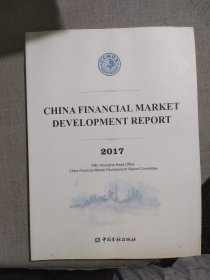
CHINA FINANCIAL MARKET DEVEL OPM
九品北京
¥ 30.00
-

CHINA FINANCIAL MARKET DEVEL OPM
九品廊坊
¥ 32.00
-

China-ASEANCleanEnergyCapacityBuildingProgramme:EffectiveUtilizationofDiverseEnergyResources---Devel
全新成都
¥ 75.60
-

CHINA GREEN TEA
八五品上海
¥ 150.00
-
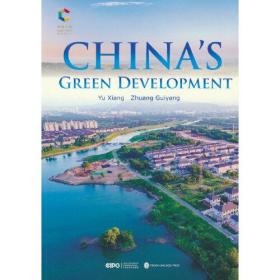
China's green development
全新北京
¥ 57.80
-

Green Action in China
九品衡水
¥ 4.00
-
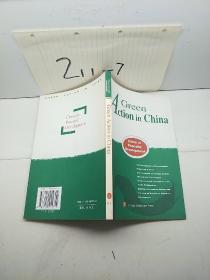
Green Action in China
八五品德州
¥ 5.00
-

Green Action in China
九品石家庄
¥ 3.60
-

Green Action in China
九品南昌
¥ 5.00
-
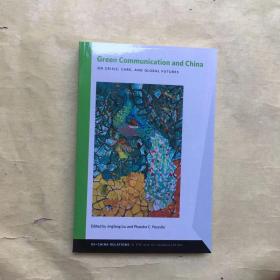
Green communication and china
九品北京
¥ 880.00
— 没有更多了 —






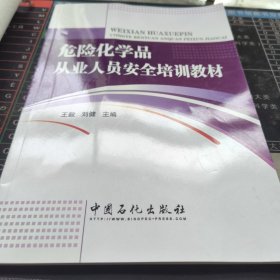





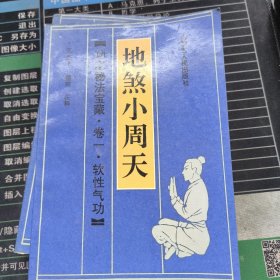

以下为对购买帮助不大的评价